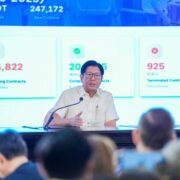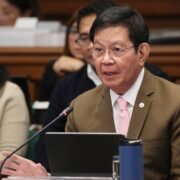Reestablishing deterrence

Whatever doubts the Trump administration’s foreign policies may have created about the United States’ commitment to the defense of the Philippines amid Chinese aggression quickly dissipated following the visit of US Defense Secretary Pete Hegseth last week.
Hegseth, the first high-ranking US official to visit the country, not only expressed the US’ “ironclad commitment” to the Philippines but also vowed to enhance military alliances to “reestablish deterrence in the Indo-Pacific region and achieve peace through strength.”
Such categorical statements effectively put to rest concerns that the US under President Donald Trump would scuttle its partnerships in the region after shaking decades-long alliances with Europe and announcing a halt in US aid to foreign countries.
In a meeting with his counterpart, Defense Secretary Gilbert Teodoro, Hegseth said the Trump administration would “truly prioritize a shift” to the Indo-Pacific with the “recognition that for the 21st century to be a free century, America needs to stand alongside our allies and partners shoulder to shoulder.”
Said Hegseth: “Together, we’ll encourage our other partners and allies in the region to step up their efforts and their cooperation to increase defense capabilities and strengthen deterrence.”
Ironclad commitment
Hegseth made similar pronouncements in Japan following his visit to Manila. “Japan is our indispensable partner in deterring communist Chinese military aggression,” including across the Taiwan Strait, he told Japan Defense Minister Gen Nakatani in a meeting in Tokyo.
That the Philippines was Hegseth’s first stop in his inaugural Asian tour underscored the country’s strategic importance in holding the line against Chinese expansionism in the region. It also affirmed the long-standing US commitment to the 1951 US-Philippines Mutual Defense Treaty (MDT), which obliges each country to come to the other’s defense in case of an armed attack.
“He (Trump) and I both want to express the ironclad commitment we have to the Mutual Defense Treaty and to the partnership, economically, militarily, which our staffs have worked on diligently for weeks and weeks and months,” Hegseth told President Marcos during his courtesy call in Malacañang.
According to Hegseth, the US aims to expand the presence of US troops in the Philippines for a “meaningful military-to-military cooperation” that is “mutually beneficial” and “critically important” to both nations.
Communist Chinese
These include deploying advanced US capabilities for the Balikatan exercises such as a ground-based anti-ship missile launcher and unmanned surface vessels, as well as joint training of Philippine and US special forces in Batanes to enhance their interoperability. More concretely, Hegseth assured the Philippines of the continuation of $500 million in US military financing and other security assistance.
“Because as we’ve talked about, peace through strength is a very real thing. Deterrence is necessary around the world, but specifically in this region, in your country, considering the threats from the communist Chinese,” Hegseth said.
He added: “Friends need to stand shoulder-to-shoulder to deter conflict, to ensure that there’s free navigation. Whether you call it the South China Sea or the West Philippine Sea, we recognize that your country has to stand very firm in that location and in defense of your nation.”
Hegseth and Teodoro, the statement said, “also reaffirmed that the MDT extends to armed attacks against either country’s armed forces, aircraft, and public vessels—including those of their coast guards—anywhere in the South China Sea.”
Other flashpoints
The statement is of paramount significance, following several incidents of Chinese ships ramming, and using water cannons and military-grade lasers against Philippine coast guard vessels. While those actions stopped short of being an armed attack which would activate the MDT, the situation remains dangerous not only for the Philippines but for the region marked by other flashpoints like Taiwan and North Korea.
And so the question arises: will the US’ repeated assurances of its “ironclad commitment” to the Philippines actually pose a deterrent effect on China? Will the deployment of advanced US military hardware and joint Balikatan exercises with the Philippines really deter China from its aggressive moves in the West Philippine Sea? Hardly, going by China’s reactions. Chinese foreign ministry spokesperson Guo Jiakun in fact warned the US and the Philippines “not to attempt to provoke military confrontation” and “undermine regional peace and stability.”
What is clear from Hegseth’s first Asian swing is that it will take more than one country—the Philippines in particular—to deter China from escalating its expansion in the South China Sea. Reestablishing deterrence—and reclaiming peace in the Indo-Pacific region—will require all nations that abide by the rule of law to match their strong words with even stronger action.





















